North India And Goa
Day 01 : Arrive Delhi
Meeting and assistance on arrival and transfer to Hotel.
Delhi : In Delhi’s 3000 years of existence, seven cities stood where the present capital of India stands. Here you’ll encounter a fascinating blend of the ancient and the contemporary - where government buildings, medieval palaces and bazaars exist besides a modern metropolis. Delhiis a city waiting to be explored.
Overnight at the hotel.
Day 02 : Delhi
Morning proceed to visit the 7th city of Delhi, Shahjahanabad (Old Delhi), built by the Mughal Emperor Shah Jahan (1639-48 AD) after he shifted his capital from Agra to Delhi. Red Fort – the 17th century imposing fortress built in red sandstone is surrounded by a huge boundary wall 33m high. Inside are exquisite palaces and beautiful gardens. Opposite the Red Fort lies Jama Masjid (Friday Mosque) made of red sandstone and white marble, completed in 1656. It is India’s largest mosque where more than 20.000 people can kneel in prayer. Visit Raj Ghat on the banks of the river Yamuna, Mahatma Gandhi’s Memorial, where he was cremated following his assassination in January 1948. An eternal flame burns 24 hours.
Afternoon visit New Delhi. Visit Qutub Minar - the landmark of Delhi, a huge tower of victory started in 1199 and completed in 1368. The minar is 72.5m high with a diameter at the base 14.4m and 2.7m at the top. Proceed to the Rashtrapati Bhawan once the Viceroy’s residence is now the official residence of the President of India. Design ed by Lutyens, it combines western and eastern styles – the dome reflects the Buddhist stupa, the chattris Hindu and the graceful colonnades very British. The Government Buildings designed by Baker, are topped by baroque domes and decorated with lotus motifs and elephants, while the north and south gateways are Mughal in design. The northern building has an inscription with “Liberty will not descend to a people; a people must raise themselves to liberty. It is a blessing which must be earned before it can be enjoyed”. The Parliament House, designed by Baker is 173m in diameter. The India Gate (42m), commemorates the 70,000 Indian soldiers who died in the 1st world war. 13516 names of British and Indian soldiers killed in the Afghan War of 1919 are engraved on the arch and foundations. Under the arch, the Amar Jawan Jyoti commemorating Indian armed forces’ losses in the Indo-Pakistan war of 1971. Overnight at the hotel.
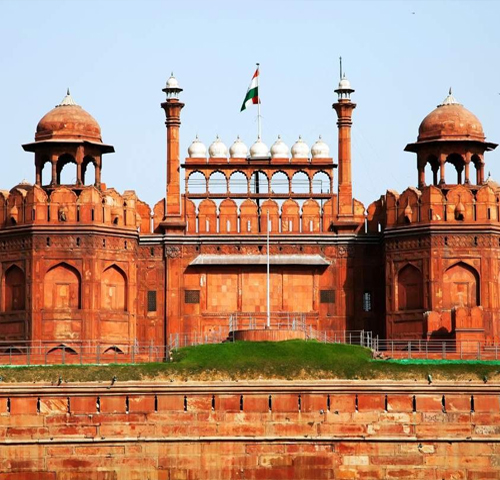

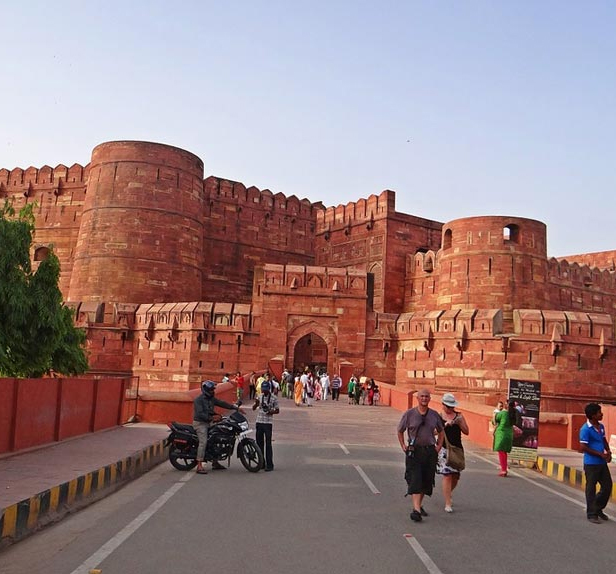
Day 03 : Delhi - Agra By Surface 204 Kms.
Agra stands on the right bank of the river Yamuna, was once the seat of the Mughal rulers, the zenith of art and an enshrined romance. A town famous for its beautiful medieval monuments. The passion of the Mughals for building endowed it with some of the loveliest buildings in the world.
Visit the Taj Mahal (1631-1653), a poem in white marble, built by Shah Jahan in memory of his beloved wife, Mumtaj Mahal. Rabindranath Tagore calls "a teardrop on the cheek of time". Taj Mahal means "Crown Palace" and is in fact the most well-preserved and architecturally beautiful tomb in the world. It is best described by the English poet, Sir Edwin Arnold, as "Not a piece of architecture, as other buildings are, but the proud passions of an emperor’s love wrought in living stones." It is a celebration of woman built in marble and that’s the way to appreci ate it. As a tribute to a beautiful woman and as a monument for enduring love, the Taj reveals its subtleties when one visits it without being in a hurry. The dome is made of white marble, but the tomb is set against the plain across the river and it is this background that works its magic of colours that, through their reflection, change the view of the Taj. The colours change at different hours of the day and during different seasons. Like a jewel, the Taj sparkles in moonlight when the semi-precious stones inlaid into the w hite marble on the main mausoleum catch the glow of the moon. The Taj is pinkish in the morning, milky white in the evening and golden when the moon shines. These changes, they say, depict the different moods of woman.
Also visit the Agra fort, built alongside the Yamuna river stretching almost 2.5 km. The fort’s colossal double walls rise 20 m in height and measure 2.5 km in circumference. The fort is surrounded by a moat. The lofty battlements of the Agra fort cast its protective shadow over the far stretching mansions of nobles and princes built along the riverfront. The magnificent towers, bastions and ramparts and majestic gateways symbolized the confidence and power of the third Mughal emperor. The fort contains splendid palaces both in red sandstone and white marble built by two generations of prolific builders, Akbar and later on by Jahangir and Shahjahan. Of the nearly 500 Akbari buildings built in the Bengal and Gujarati traditions, only a few have survived, arrayed in a band on the riverfront. Overnight at hotel.
Day 04 : Agra - Jaipur by Surface 232 Kms.
Breakfast at hotel. Depart Agra or Agra, altogether a journey of about 6-7 hours (237 Kms). En route visit Fatehpur Sikri. Fatehpur Sikri was built by Emperor Akber in 1569 and abandoned after 15 years due to scarcity of water. Visit the remarkably well-preserved, graceful buildings within the 'Ghost City' including the Jama Masjid, tomb of Salim Chisti, Panch Mahal Palace and other palaces that speak of the grandeur and splendor of the Mughal empire at the height of its power. After visiting Fatehpur Sikri drive continue to Jaipur and check-in at Hotel. Overnight at Hotel
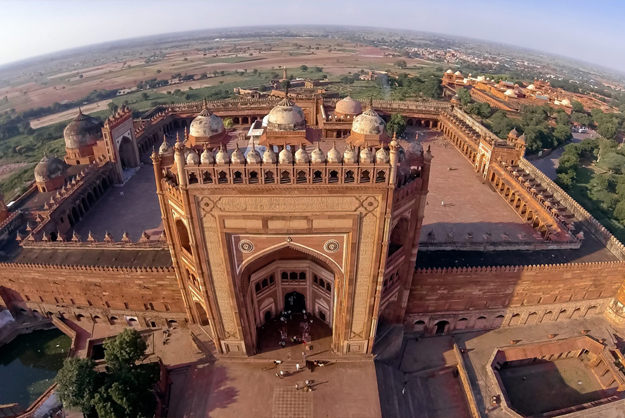
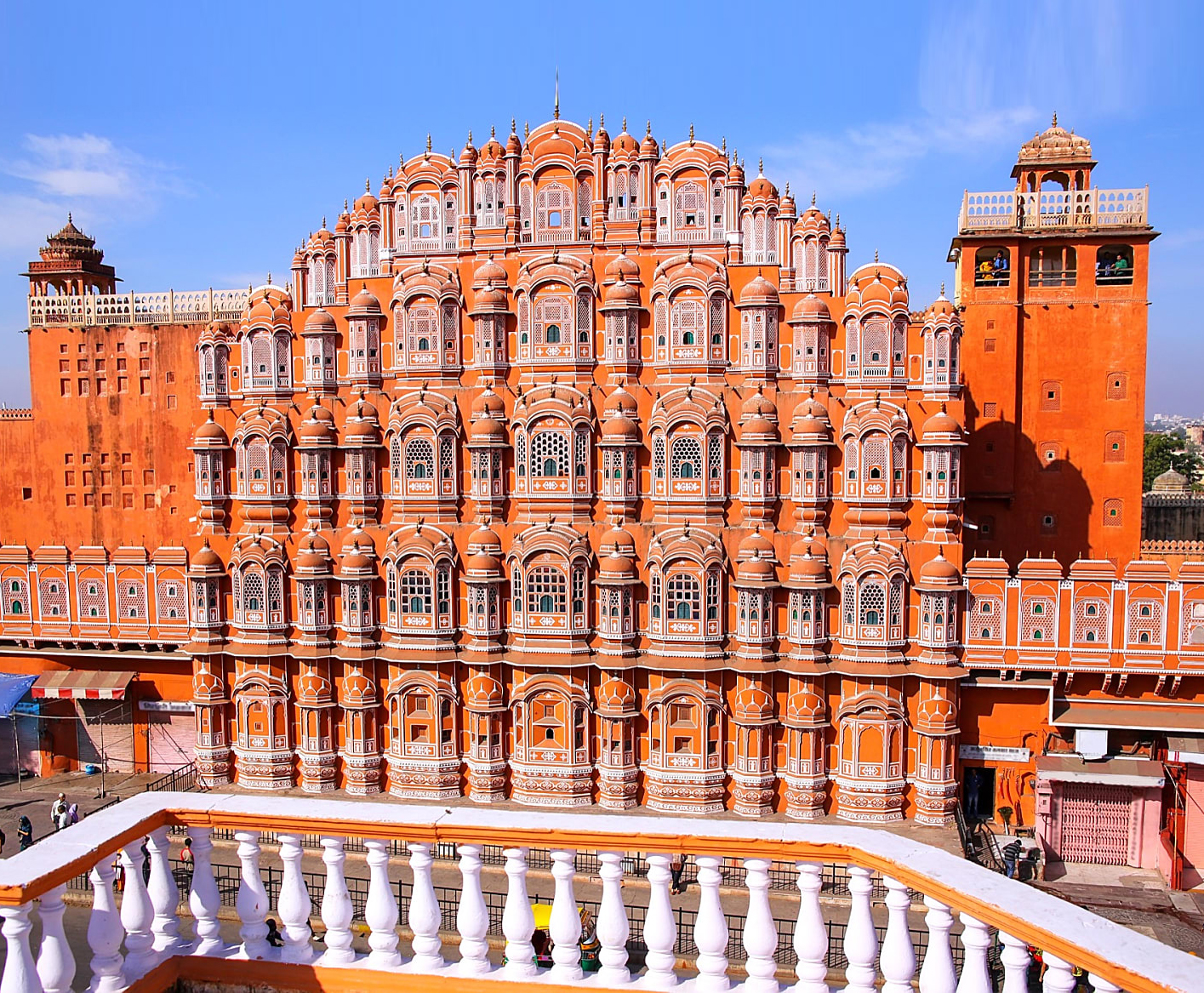
Day 05 : Jaipur
After breakfast, half-day excursion trip takes you to Amber Fort. En route, make a photo stop at the palace of winds the Hawa Mahal. A 5-storied building with 25cm thick facade from the 18 century having 953 windows and niches so that ladies of royal family could see the processions and events in the city without being visible to the people. Proceed to the Amber Fort situated 130m high with the Aravalli hills around and 11 km north of Jaipur. It was the ancient capital of the Rajputs till 1037. Enjoy an Elephant ride from the parking to the entrance of the fort.
Afternoon visit the “Pink City” of Jaipur. The City Palace occupies the center of Jaipur. It now houses the Royal residence and museums with collections of textiles and costumes, armoury, manuscripts, paintings etc. Also visit Jantar Mantar (1728-34) by king astrologer Jai Singh II. The instruments are built of stone with marble facing on the important plains for measuring the harmony of the heavens. Each instrument serves a particular function and each gives an accurate reading. Overnight at the hotel.
Day 06 : Jaipur-Mandawa By Surface 160 Kms.
After breakfast, drive to Manwada and on arrival, check in at the hotel.
In the heart of the Shekhawati region of Rajasthan lies the beautiful small town Mandawa, known throughout the state for its forts and havelis. The structures of this place reminds one of the cultural and social hotspot this place used to be in the bygone era.
Mandawa is situated in the north Indian state of Rajasthan around 190 km off Jaipur, the capital of the state. The town lies between latitude 28.06° in the north and longitude 75.20° in the east. The fort town of Mandawa is well connected with the other places in region through a good network of roads. The compact and busy little market town of Mandawa was settled and fortified in 18th century by the dominant merchant families of the region. The wealthy businessmen of the village constructed many havelis and baolis with colored painting adorning their walls. Later on, with the migration of these merchant families, their old settlements remained in total obscurity with no one to look after them. Despite the time lapse and ignorance about these visual and architectural extravaganzas, their attraction did not fade and today they are some of the major attractions for the tourists visiting Rajasthan. Overnight at hotel.
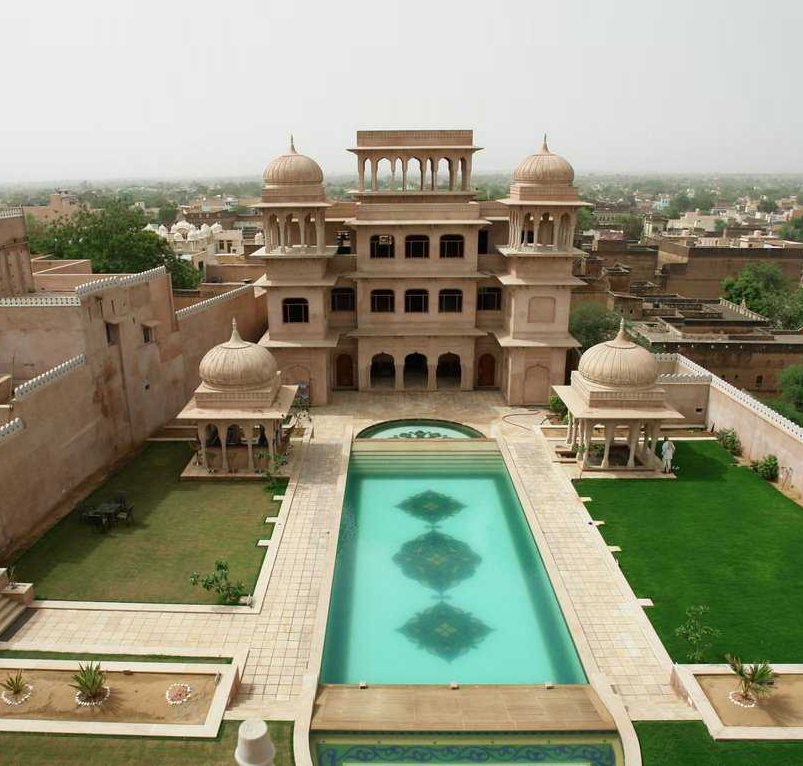
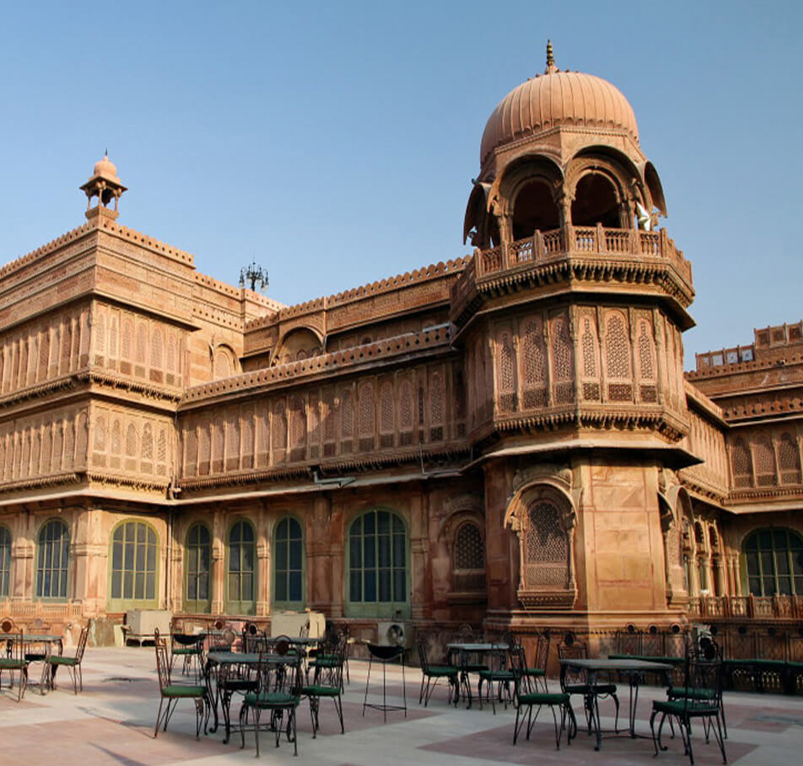
Day 07 : Mandawa-Bikaner By surface 205 kms
After breakfast, drive through typical desert country to Bikaner in the middle of the Rajasthan’s Thar Desert. On arrival, check-in at the hotel.
Bikaner founded by Rao Bika in 1488. An oasis town among scrub and sand dunes. The walled city retains a medieval air and sandstone architecture. Afternoon tour of Bikaner takes you to visit the Junagarh Fort which is unusual, because other major forts of Rajasthan were built on hilltops, but this fort is built on the desert plain, surrounded by a moat. Half day sightseeing of Bikaner. The city is bolstered by imposing walls and has a 16th century fort housing old palaces, temples and a mosque. Founded by Raja Rai Singh, the fort is distinguished by its long range of 37 pavilions, a line of balconies and aerial windows of varying designs. An enormous arched doorway leads to the Joramal temple. The royal chapel is Har Mandir where royal weddings and births were once celebrated. (3-4 Hours). Overnight at the hotel.
Day 08 : Bikaner- Jaisalmer By Surface 333 kms
After breakfast, drive to Jaisalmer and on arrival, check in at the hotel. Jaisalmer across the hot barren desert is magical as the city shimmers like a mirage. The golden sandstone town walls and narrow streets lined with exquisitely carved buildings, through which camel carts trudge leisurely, has an extraordinarily medieval feel and an incredible atmosphere. The fort inside perched on its hilltop contains some gems of Jain temple building, while beautifully decorated merchants’ havelis are scattered through the town. Afternoon Free. Overnight at the hotel


Day 09 : Jaisalmer
After breakfast, visit the Jaisalmer fort that stands about 100 meters over the city and in fact houses a citadel within its huge ramparts. Walking down the narrow cobbled stone lanes, one can feel the sheer magic of Jaisalmer. Several entrances called Pols , including the Ganesh Pol, Suraj Pol, Bhoota Pol and the Hava Pol guard the Megh Durbar and the Jawahar Mahal which were occupied by the royal family. Also visit the Havelis (mansions of the rich merchants) have beautifully carved facades, jali screens and oriel windows overhanging the streets below. Visit Salim Singh Haveli (17 century) which is especially attractive with peacock brackets. Nathumal Haveli (1885) was built for the prime minister. Patwon Haveli (1805) is a group of five, built for five brothers. Possibly the finest in town. They have fine murals and carved pillars. A profusion of balconies cover the front wall.
Late afternoon excursion to Sam sand dunes to enjoy a camel ride and a magnificent sunset. Overnight at the hotel.
Day 10 : Jaisalmer- Jodhpur By Surface 333 kms
After early breakfast set out on the drive to Jodhpur. On arrival check in at hotel. Jodhpur is at the edge of the Thar Desert and is the largest city in Rajasthan after Jaipur. Among Rajasthan's many princely settlements, Jodhpur is one of the most distinctive. This five hundred year old settlement was the headquarters of the Rathore Rajputs' celebrations for their tales of daring. Jodhpur is known for its impressive fortifield bastions, specially those of Mehrangarh which have bee n witness to many battles and were associated closely with the history of the region. The years of peace that followed resulted in the building of palaces that were laid on open grounds and spread out in an elaborate European mannerAfternoon visit the impressive Mehrangarh Fort on a 37 m low sandstone hill built by Rao Jodha in 1459. From the top of the fort one can get a bird’s eye view of the old city. You will notice the predominance of blue houses referred to as Brahmin houses - the colour being associated with the high caste. Proceed to the Jaswant Thada, an imposing marble cenotaph built in 1899 for Maharajah Jaswant Singh II, and smaller memorials to other Maharajahs of Jodhpur. At the end of the tour enjoy a short walk through the local and vibrant bazaar of Jodhpur. Overnight at the hotel.

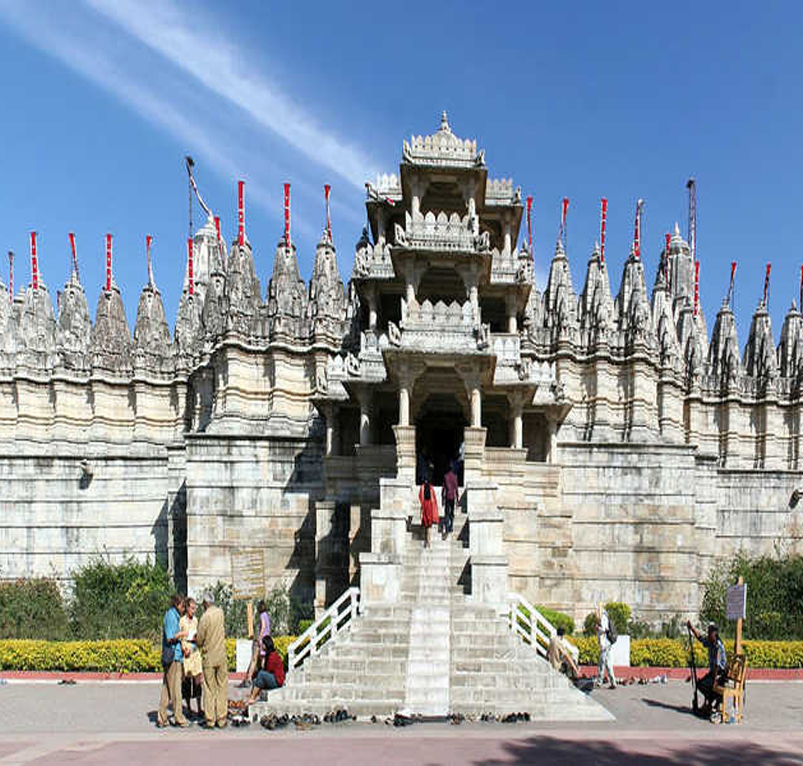
Day 11 : Jodhpur - Ranakpur - Udaipur By Surface 264 kms
After breakfast drive to Udaipur. En-route visit Ranakpur, the wonderful 3 temples of the Jain sect dating back to the 14th/15th century. The unforgettable main Temple dedicated to Adinatha the first Tirthankar (1439) built in marble took 65 years to complete. It is one of the five holy Jain pilgrimage centres, and has one of the best temple complexes. On arrival in Udaipur, check in at the hotel.
Udaipur lies in the Girwa valley amidst the Aravali hills of south Rajasthan. It is considered a romantic city - with its lakes, gardens, temples and palaces - an Oasis in the Thar desert. The old city is a traditionally planned fortified walled city, a maze of narrow winding lanes flanked by houses with doorways decorated with Mewar folk art, windows with stained glass or jali screens, massive havelis with large inner courtyards and shops. The legendary Ranas who ruled, traced their ancestry to the Sun Dynasty. Overnight at the hotel.
Day 12 : Udaipur
After breakfast visit the City Palace built on the bank of the Pichola Lake, by Maharana Udai Singh in 1570. The impressive complex of several palaces is a blend of Rajput and Mughul influences. Half of it is still occupied by the Royal family, and part converted into a museum. The Jagdish Temple (1651) was built by Maharana Jagat Singh. A fine example of the Nagara style of temple architecture. A brass Garuda stands outside and stone elephants flank the entrance steps Inside is a black stone image of Vishnu as Jagannath, the Lord of the Universe. Sahelion-ki Bari an ornamental pleasure garden specially made for the ladies of the palace in the 18th century. It has beautiful fountains, trees and flowers. Overnight at the hotel.
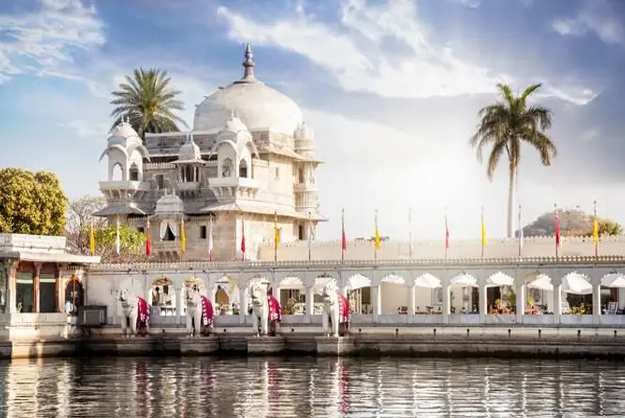
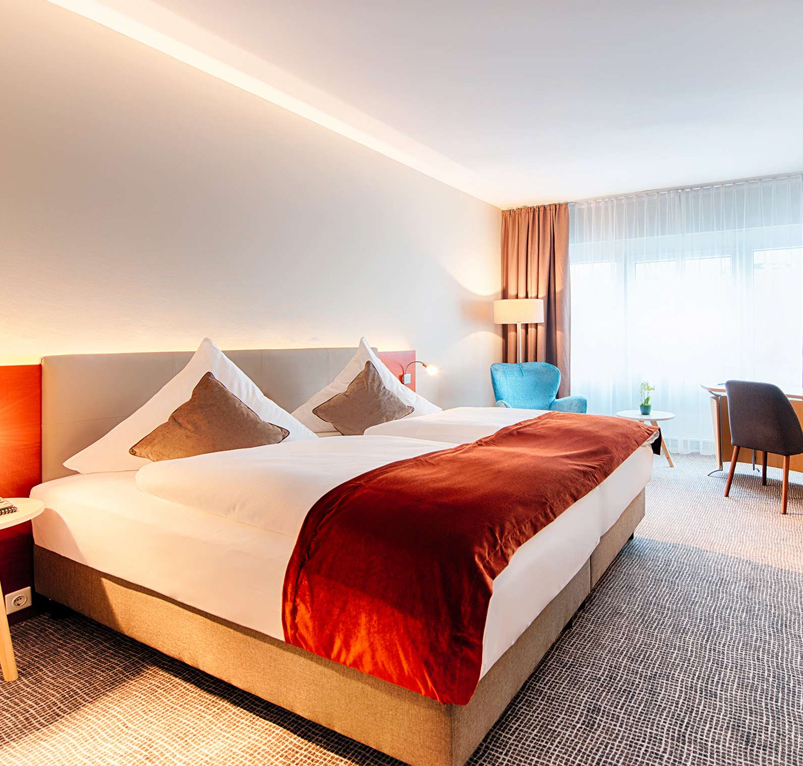
Day 13 : Fly Udaipur - Mumbai
Morning transfer to airport to connect flight 9W 2207 (0820-0935 hrs) for Mumbai. On arrival transfer to hotel. Rest of the day at leisure. Overnight at hotel
Day 14 : In Mumbai
Breakfast at the hotel. Morning half day excursion to Elephanta Caves. An early morning excursion across the Mumbai harbour to 1200-year old Elephanta Caves housing some of the most beautiful rock-cuts of the period. The famous Trimurti sculpture of three-faced Shiva depicting his three aspects as Creator, Preserver and Destroyer is powerfully portrayed in the massive sculpture. Closed on Mondays and not available during the Monsoon.
Afternoon half day visit to Gateway of India, Mumbai's principle landmark. This arch of yellow basalt was erected on the waterfront in 1924 to commemorate King George V's visit to this colony in 1911. Drive past the Afghan Church. Secretariat of Maharashtra Government and along the Marine Drive which is fondly known as the 'Queen's Necklace'. Visit Jain temple and Hanging Gardens which offer a splendid view of the city, Chowpatty, Kamala Nehru Park and also Mani Bhavan where Mahatma Gandhi stayed during his visits to Mumbai. Drive past Haji Ali Mosque, a shrine in honour of a Muslim Saint on an island 500 m. out at sea and is linked by a causeway to the mainland. Stop at the 'Dhobi Ghat' where Mumbai's 'dirties' are scrubbed, bashed, dyed and hung out to dry. Watch the local train passing close by on which the city commuters 'hang out like laundry' - a nice photography stop. Continue to the colourful Crawford market and to the Flora fountain in the large bustling square, in the heart of the city. Overnight at hotel.
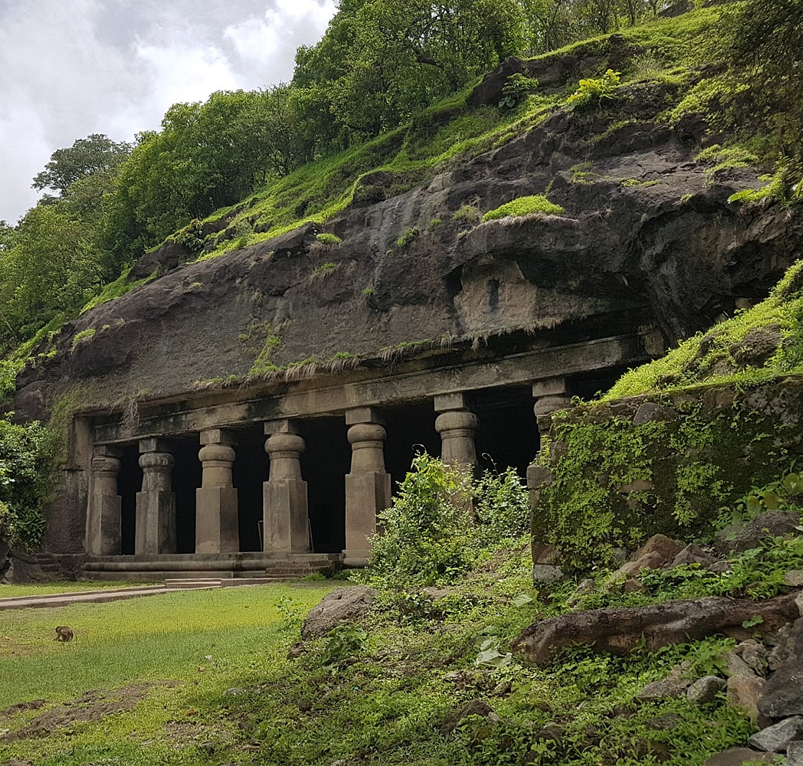
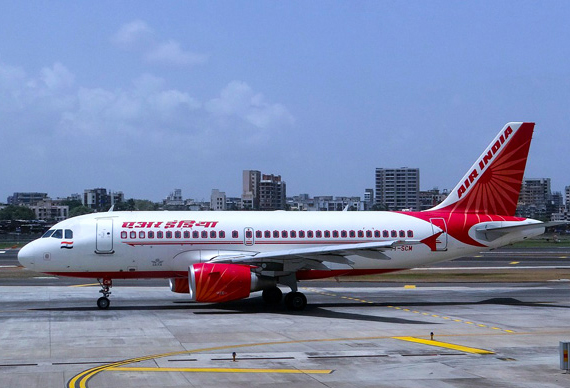
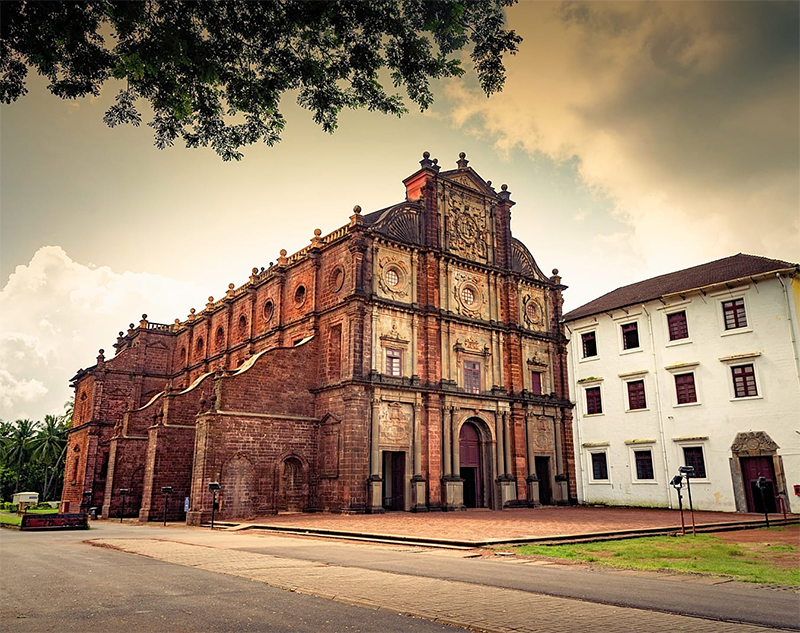

Day 15 : Fly Mumbai-Goa
Morning transfer to airport to connect flight 9W 475 (1200-1300 hrs) for Goa. On arrival transfer to hotel. Rest of the day at leisure. Overnight at hotel.
Day 16 : In Goa
Breakfast at the hotel.Later proceed for Morning Half day sightseeing starts from the slopes of Altinho Hill for a breathtaking view of Panjim and river Mandovi. Arrive to Donapaula for a view of India's largest natural harbour Marmgoa. Proceed to Old Goa visiting Basillica of Bom Jesus where in is enshrined the body of St. Francis Xavier in a silver ornate casket. St. Cathedra, the biggest church in the East. The cathedral built in purist Tuscan style and is stagerring in proportions. In one chapel is kept the Cross of Miracles, said to grow in size & have healing properties. Heavily gilded central altars depict the martyrdom of Saint Catherine, to whom the cathedral is dedicated St. Cajetan built like St. Peters (Rome), Church of Lady Rosary and St. Monica. This huge, three-storied laterite building was commenced in 1606 and completed in 1627. Once known as the Royal Monastery on account of the royal patronage, which it enjoyed, the building is now used by the Mater dei Institute as a nunnery, which was inaugurated in 1964. Also visit Ponda, the temple city & visit Mangueshi & Shantadurga temples. Also visit the famous churches at Old Goa - Basilica of Bom Jesus & The Se Cathedral.Afternoon at leisure. Overnight at hotel.
Day 18 : In Goa
Breakfast at the hotel. Full day free for independent activities. Overnight at hotel.
Day 19 : In Goa
Breakfast at the hotel. Full day free for independent activities. Overnight at hotel.
Day 20 : In Goa
Breakfast at the hotel. Full day free for independent activities. Overnight at hotel.
Day 21 : Goa-Trivandrum
Breakfast at the hotel. Later transfer to airport to connect flight IT 2883 (1520-2015 hrs) for Trivandrum. On arrival transfer to the residence of your friend.